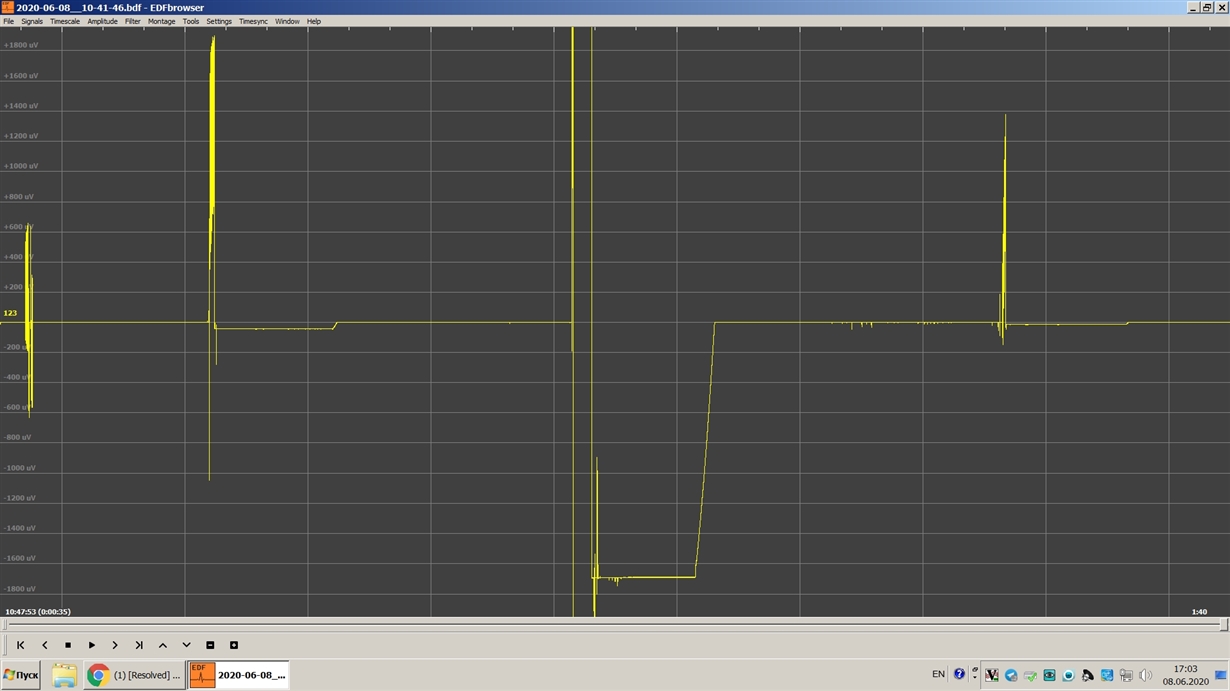Hello,
I have a problem which lasts 10 seconds randomly. No matter internal or external signals. I see no reason why it appears.
Here are some figures with problem.
2. The first problem case.
3. The second problem case.
4. Connection.
Thank you,
Artem.


